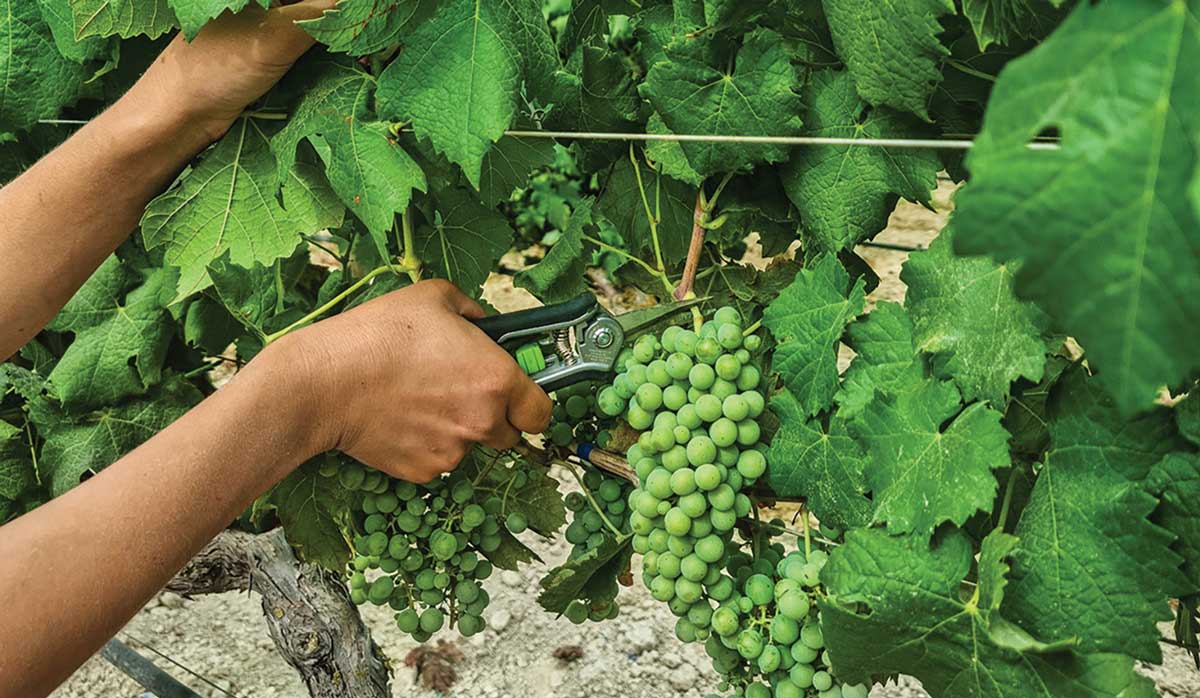Next Generation Viticulture: Capture more light to harvest more grapes
Transforming canopy management systems to maximise sunlight could increase vineyard profitability without compromising wine quality, says researchers.
With roughly 72,000 tons of grapes dropped from New Zealand vineyards each summer, the wine industry could be tapping into a verjuice income stream, says a sensory expert.
Dr Amanda Dupas de Matos is researching consumer perceptions and preferences around the unfermented grape juice, which is typically used as an acidic condiment, but increasingly in beverages. “The utilisation of thinned unripe grapes represents a great opportunity for New Zealand wineries to increase their income by commercially using a material that is normally discarded, converting a waste material into a high-value product,” her research project reveals.
Amanda, who is Sensory Research Officer at the Food Experience and Sensory Testing (Feast) laboratory at Massey University, says understanding consumer attitudes could help propel production, marketing and sales of verjuice by New Zealand wine companies. One pertinent finding is that people want the verjuice packaged according to its purpose, such as a vinegar-style bottle if it’s intended for dressings and marinades, and a wine or beer-style bottle if it’s destined for a cocktail or non-alcoholic beverage. They also want label information that sheds light on the product, such as alcohol-free, a product story, sensory description and suggested uses.
Those are useful insights to have, says Greystone Winemaker Dom Maxwell, who likes the fact that thinned Pinot Gris fruit from the North Canterbury vineyard is gathered up for verjuice, with roughly five vintages bottled during the past decade. With foodies on staff, a restaurant on site, and a farming philosophy across the vineyard, the verjuice is seen as a great part of the Greystone package, says Dom. But there is cost involved for this “relatively low return product”, and he’s looking to implement some of the findings of Amanda’s research - including different packaging - to help it pay its way. The company is currently experimenting with other products from grape juice, including sparkling verjuice, though still in development phase, Dom says.
Greystone is one of a handful of verjuiceproducing wineries Amanda has worked with, alongside Neudorf in Nelson and Wrights in Gisborne, and producers in Australia, Portugal, Canada, England and Austria. She says winemakers are passionate about wine, and verjuice tends to get a bit lost at the back of the cellar door. But there are some winemakers working towards innovation when it comes to wine’s unripe cousin, and eager to tap into knowledge of what consumers want.
The researcher, who is originally from Brazil, completed her PhD on verjuice at Italy’s University of Padua in 2019, and also spent six months in Oregon working on the project. She moved to New Zealand in February 2020, just before the first Covid-19 lockdown, and has been working to bring more wine-related research to Feast, initiating collaboration with wineries across New Zealand.
While verjuice has a long history globally, and has been “rediscovered” as a food condiment abroad, it is still a relatively unknown product in New Zealand. “As verjuice is not yet regulated there is a wide scope for winemakers to innovate and have autonomy over variables such as grape picking time, grape varietal, production methods and target end-uses,” Amanda highlights in her research summary, noting a range in the global market, where some are very sour and others sweeter.
The first stage of Amanda’s research involved asking “what sensory profile is desirable to New Zealand consumers in verjuice products?” Consumer discussion groups used verjuice products from different countries, including New Zealand, Australia, Portugal, England, Austria, Iran, Canada and the United States, and considered sensory profiles, possible uses, preferred packaging types, and desired label messaging. Amanda also conducted interviews with winegrowers from different countries to understand business motivations, challenges and decisions concerning verjuice production, from sensory profile and potential uses, to selling channels and price.
 |
|---|
|
|
Consumer opinions did not necessarily always agree with the views and needs of winegrowers, in terms of sensory profile, desired packaging and label information. “In addition, it seems that perhaps wine producers have not explored the potential, value and versatility of this product yet.”
The next stage of Amanda’s work is a larger quantitative consumer study to understand consumer responses and characterise the sensory profile of different verjuice products, as well as an assessment of the volatile composition and other oenological parameters.
Understanding and predicting consumer choice is essential to the development, acceptance, and success of new products, says Amanda. “Exploring consumer engagement and responses and therefore potential markets for verjuice in New Zealand would add further to the national and international wine industry reputation as being at the forefront of global wine industry innovation.”
To learn more email Amanda: This email address is being protected from spambots. You need JavaScript enabled to view it.

The end of the year is fast approaching, so here are some thoughts on a few of the significant developments…

OPINION: When I moved to Marlborough two decades ago, I found countless lines of tidy vines, neatly mowed and carefully…
The large 2025 harvest will exacerbate the wine industry's "lingering" supply from recent vintages, New Zealand Winegrowers Chief Executive Philip…
If you find a new consumer in a developed wine market, you are taking them from someone else, says Blank…
With the stars of Matariki to rise in June, Jeff Sinnott, a member of the Tuku Māori Winemakers Collective, looks at…